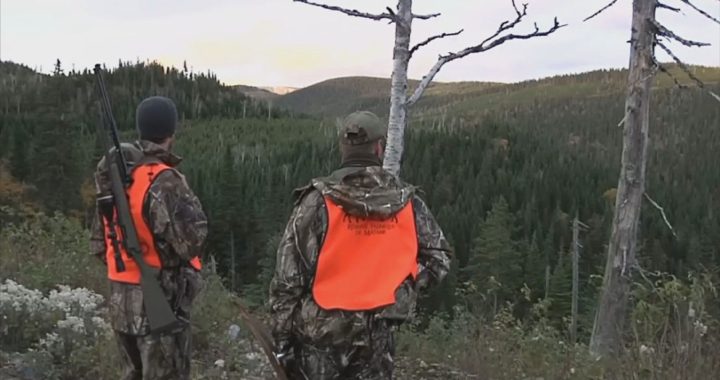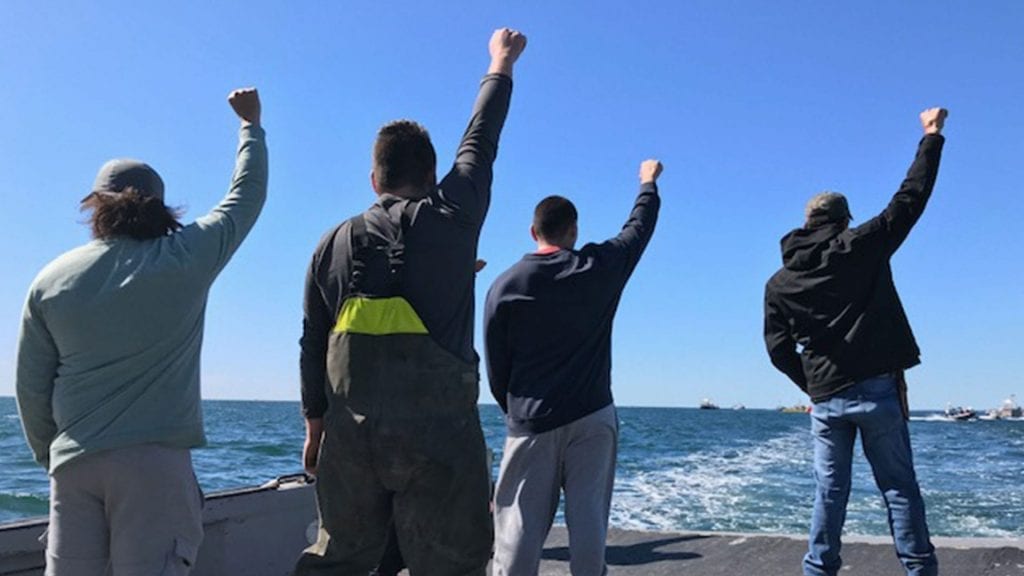
Sipekne’katik fishers received little protection from law enforcement during the 2020 treaty fishery standoff. Photo: APTN
Internal records from the Department of Fisheries and Oceans (DFO) reveal the bureaucracy was rattled, slow to act and largely unprepared for violent protests targeting the launch of the Sipekne’katik First Nation’s moderate livelihood lobster fishery in September.
Hundreds of documents released to APTN News under Access to Information show public servants were well aware these protests were coming, even predicted they would turn violent. They knew southwestern Nova Scotia was a powder keg ready to blow.
And when it did, DFO brass stood their officers down, directing them to “observe, record and report” as the war for the Saulnierville wharf spiraled out of control before their eyes.
“I am not putting employees under my direction in harm’s way in a reactionary and careless manner,” said Todd Somerville, a senior law enforcement official, in an email to his subordinates.
“This is my decision, supported as well by senior leadership, and I am the one accountable for it.”

RCMP on the water were outmatched some 100 to one at the time. The Coast Guard was called in. But by then it was too late.
The scene in St. Mary’s Bay had descended into chaotic boat ramming, gear destroying, flare shooting, bullying and harassment by a fleet of Acadian commercial vessels against Mi’kmaw harvesters with virtually no law enforcement present.
Here’s how Canada’s marine security infrastructure failed the Mi’kmaq.
Sept. 11: Sack pleads for protection
Prior to violence erupting, Sipekne’katik Chief Mike Sack wrote a letter to DFO Minister Bernadette Jordan, Nova Scotia Premier Stephen McNeil and the RCMP warning them of what was coming.
He was concerned about ongoing threats, harassment, boat burning and attacks targeting his harvesters.
He sent DFO the Sipekne’katik fish management plan and pleaded for protection.
“Ongoing protests planned for Tuesday, September 15th, [of] which the intention is to block Saulnierville wharf, a government wharf, by the commercial fishers is a direct violation of the conditions of their fishing license (sic) and we call on both the RCMP and the Department of Fisheries and Oceans to be present and take immediate actions if any activities hinder the Mi’kmaq fishing activities,” said the Sept. 11, 2020 letter.
“The Sipekne’katik Band calls on all parties to protect our members in exercising their right to fish for food and trade.”
But DFO didn’t see it that way. Conservation and Protection, commonly abbreviated as C&P, viewed the treaty fishery a form of protest.
“Fishing without a licence is a violation under the Fisheries Act,” explained one media line. “Anyone fishing without a licence may be subject to enforcement action.”
C&P was preparing to increase these operations prior to Sipekne’katik’s fishery launch.
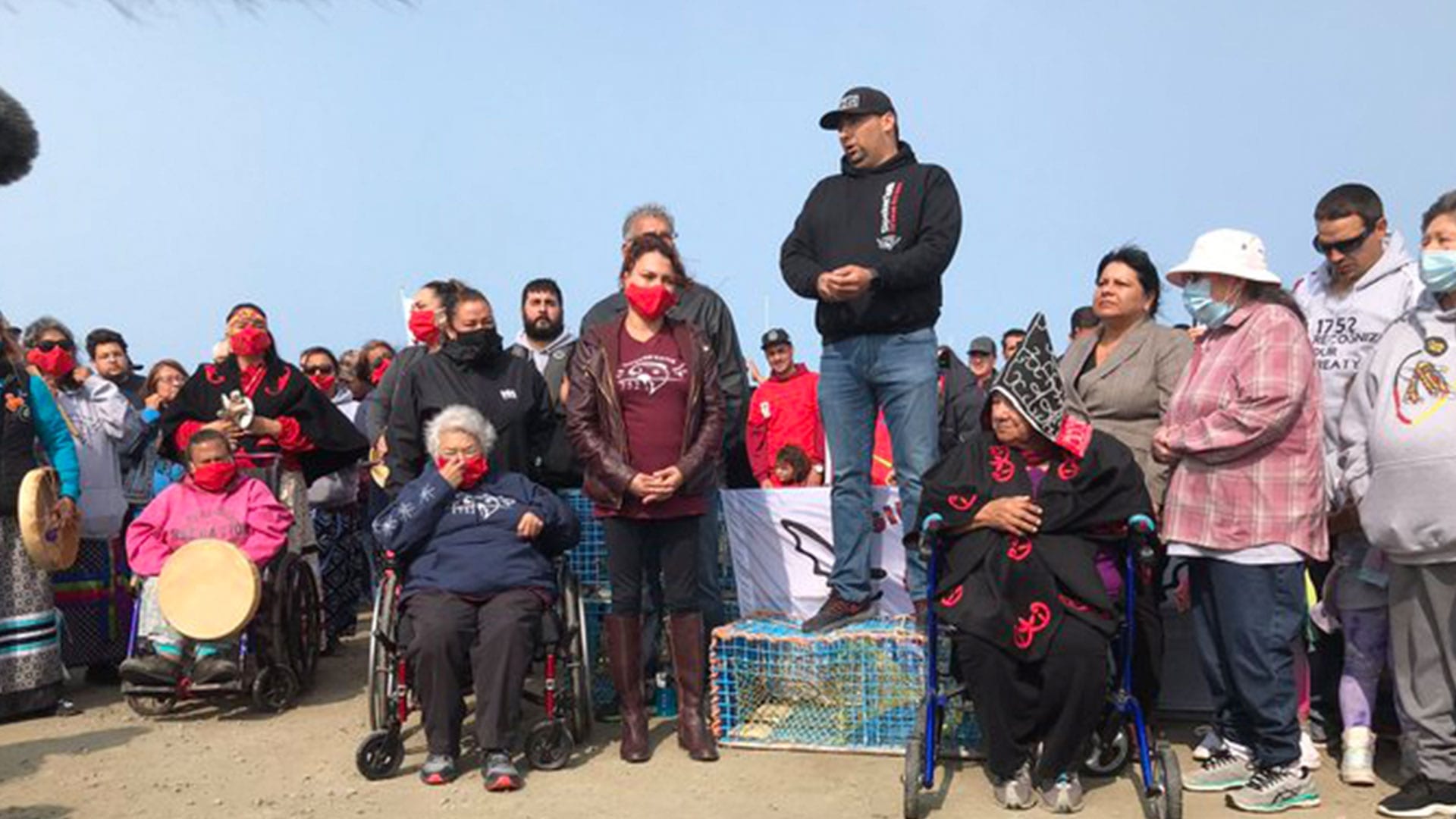
On Sept. 10, communications staffers were deciding how best to tell the public about ramped up enforcement ops. They knew conflict was brewing.
“Tensions are high between harvester groups. Public perception is that DFO is ‘doing nothing’ to stop unauthorized [fishing] activity,” said a draft document.
“On social media (in known private Facebook groups) the discussions are heated, however, the public discussion online while still polarized is more tolerant.”
The document said aerial surveillance, river, on-the-ground, night and covert patrols had all been ratcheted up. They were intent on cracking down on any fishing not regulated by DFO.
“Recently, significant efforts have been deployed in Miramichi and St. Mary’s Bay areas with [redacted] hours of patrol, resulting in direct interventions,” said the draft. “Hundreds of illegal lobster traps have been removed from the water, and investigations are underway.”
Communications staffers urged spokespeople, if pressed, to say the following:
“Fishery officers in ***insert name of area*** were on regular patrols today and carrying out their normal, prescribed duties. Officers were actively monitoring activities at the wharfs throughout their patrol area.”
Sept. 14: DFO prepares for civil unrest, command post established
Meanwhile, fishery intelligence specialists were refining their information and tracking industry protests.
A Sept. 14 C&P compliance report shared with top bureaucrats summarized the simmering frustration in southwestern Nova Scotia (SWNS).
“Area staff continue to receive numerous calls from clients reporting that illegal lobster harvesting, buying and selling activities in SWNS continue. Activity is not decreasing,” said the report.
A gear hauling operation was ongoing in St. Mary’s Bay. A Sept. 8 call between DFO and industry leaders indicated industry felt “DFO is not doing enough” to clamp down.
DFO knew a large industry protest was planned for Sept. 15, the exact itinerary, proposed route and the identities of key spokespeople.
“Fishermen plan to drop off lobster traps at the Meteghan DFO office and the Saulnierville wharf during and after the rally,” said the report.
C&P then established an incident command post “to respond to the potential for protest activity and related civil unrest.”
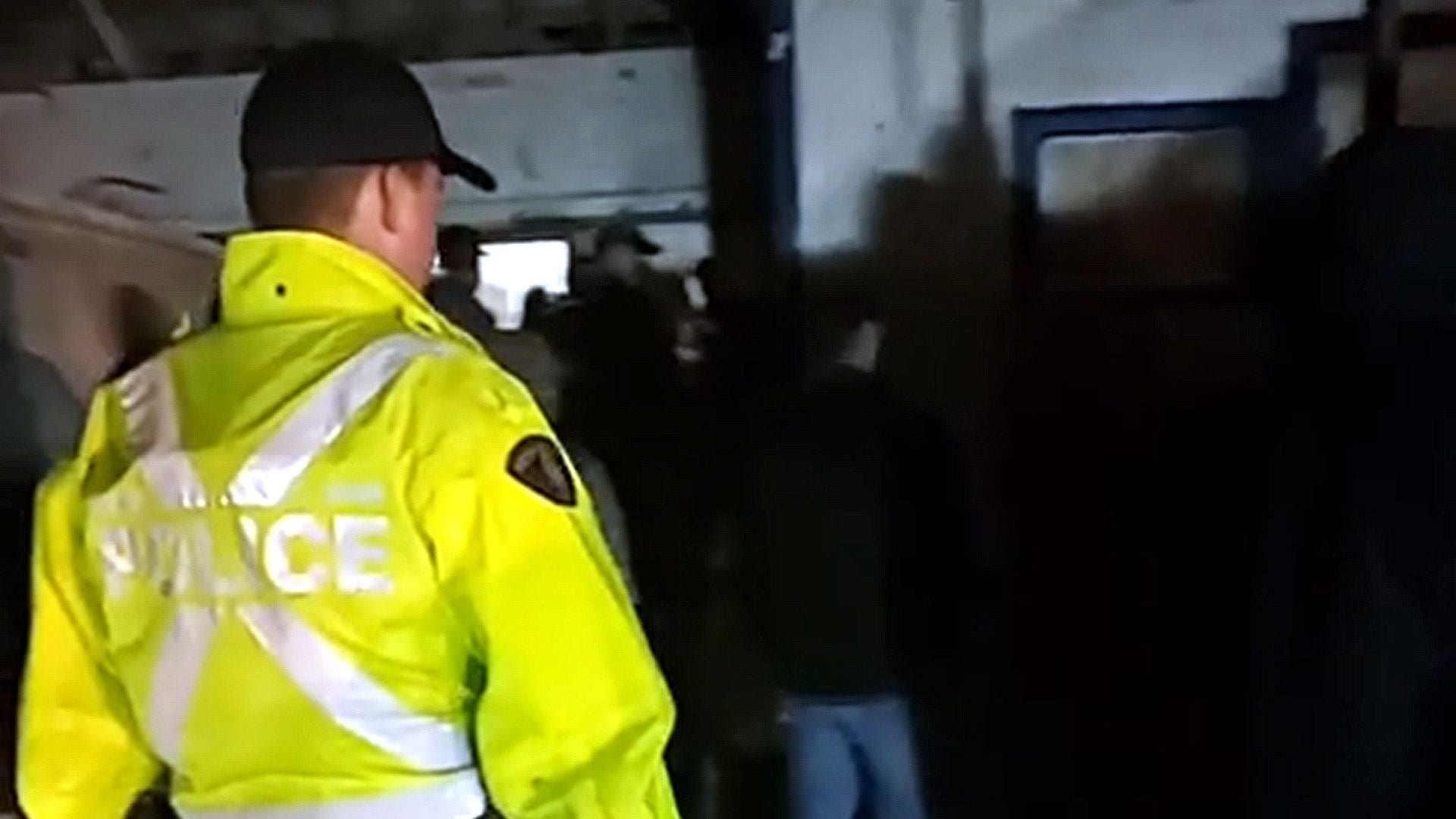
DFO viewed harassment against the Mi’kmaq as a problem for the RCMP.
“Destroying or tampering someone else’s fishing gear is considered vandalism and should be reported to the RCMP,” went a proposed media response. “DFO will work with the RCMP to ensure peaceful and orderly fisheries.”
But the Mounties saw the fishery dispute as an issue for C&P.
“The RCMP view the ongoing use of the Saulnierville Wharf is a DFO matter,” said the C&P report, adding that police wouldn’t intervene unless they had cause to do so.
“As the RCMP have not received complaints from individuals regarding reports of threats of intimidation, and as such will not respond until they have first hand complaints to address. The Area Office will communicate the need to report incidents to the RCMP to industry representatives who have reported conflict at the wharf.”
Sept. 15: Protest turns ugly
DFO’s intelligence reports about the protest proved accurate. The RCMP’s hold-back approach was on full display.
Mounties were basically absent as the peaceful protest turned confrontational at the Weymouth, N.S., wharf.
Ku’ku’kwes News estimated 300 protesters confronted Mi’kmaw fishers on the wharf with only two RCMP officers on hand. Other reports corroborated the slim number of cops facing down the large crowd.

Commercial fishers also used lobster traps to construct barricades at Saulnierville wharf and outside local C&P detachments.
This protest strategy would backfire on them. They wanted C&P to “do their jobs” and crack down on Mi’kmaw fishing.
Instead, C&P staff vacated the detachments to non-government buildings due to the ongoing harassment.
Sept. 16: Calm before the storm
A Coast Guard official peppered DFO with emailed questions early on Sept. 16.
“Does MSOC E have any line of sight on the protests and issues in St. Mary’s bay on the issue of the lobster fisheries and in particular the issues between commercial and First Nations?” asked director general of operations Marc Mes.
“This is an C&P issue. Is this being tracked? Are MSOC involved? Any coordination? Briefings? Is DND involved in discussions?”
MSOC E stands for Marine Security Operations Centre – East.
MSOCs consist of federal agencies responsible for marine security including the RCMP, the Defence Department, DFO (which includes the Coast Guard), Canada Border Services Agency and Transport Canada.
MSOCs have the authority and capacity to respond to national security threats against Canada in a coordinated way.
“I am monitoring only. C&P in the area are active. I have been chatting with [redacted] on the protests as well,” an acting intelligence supervisor, whose name was redacted, replied.
“I engaged [redacted] to ask if [redacted] (RCMP) was following as well. No further info there.”
Mes would later be tapped to head an incident management team when violence erupted on the water the following day.
Read More:
Mi’kmaq lobster boats surrounded by Acadian commercial fishing vessels as traps are stolen, cut
Fisheries conflict: Mi’kmaw Chiefs declare state of emergency
But for now, on Sept. 16, things were quiet. A short briefing email from a C&P intel officer traded up the chain of command that evening.
It had “protest activity tomorrow in Digby Co.” as the subject line.
That meant the treaty fishery launch.
“Tomorrow, September 17th, Sipekne’katik Mi’kmaq are opening their own sustainable and self-regulated livelihood fishery (the Sipeknekatik Rights Implementation Fishery), with events kicking off at Saulnierville wharf,” the officer wrote.
“Tentatively, there may be a counter protest in St. Mary’s Bay tomorrow with between 200-300 commercial fishing vessels on the water. Boats from the scallop fleet are anticipated to be amongst the fishing vessels and they are planning to actively drag the bay and haul all gear in the bay.”
Despite being aware of impending vigilantism, it isn’t clear that DFO did anything at all to intervene.
As the violence unfolded Sack continued to call on DFO and RCMP to protect the Mi’kmaq.
On Sept. 17, Canada’s marine security establishment failed to uphold any rule of law on the water whatsoever.
Sept 17-18: All hell breaks loose
Sipekne’katik held a blessing of the fleet at 11 a.m. local time and distributed their livelihood tags at noon.
In an email time-stamped 12:10, the following updates were shared among senior DFO staffers.
There were 80 commercial lobster vessels in St. Mary’s Bay near Saulnierville wharf with confirmed reports more were arriving. Industry fishers were going to remain in the area rather than return to port that night.
DFO received reports a Mi’kmaw harvester was circling the commercial vessels “indicating that he is recording the names of all vessels and reporting this information to authorities.”
At 1 p.m. Newfoundland time, Minister Jordan’s office formally requested Coast Guard assistance.
It appears only then that the MSOC sprung into action.
CCGS Corporal Teather was already in the area helping C&P with their enforcement ops against the Mi’kmaq. The ship reported a distress call from a vessel whose name is redacted in the documents.
The incident was likely connected to a dangerous occurrence report an MSOC-East email account distributed to different federal agencies at 10:36 p.m. Details of the incident are completely redacted.
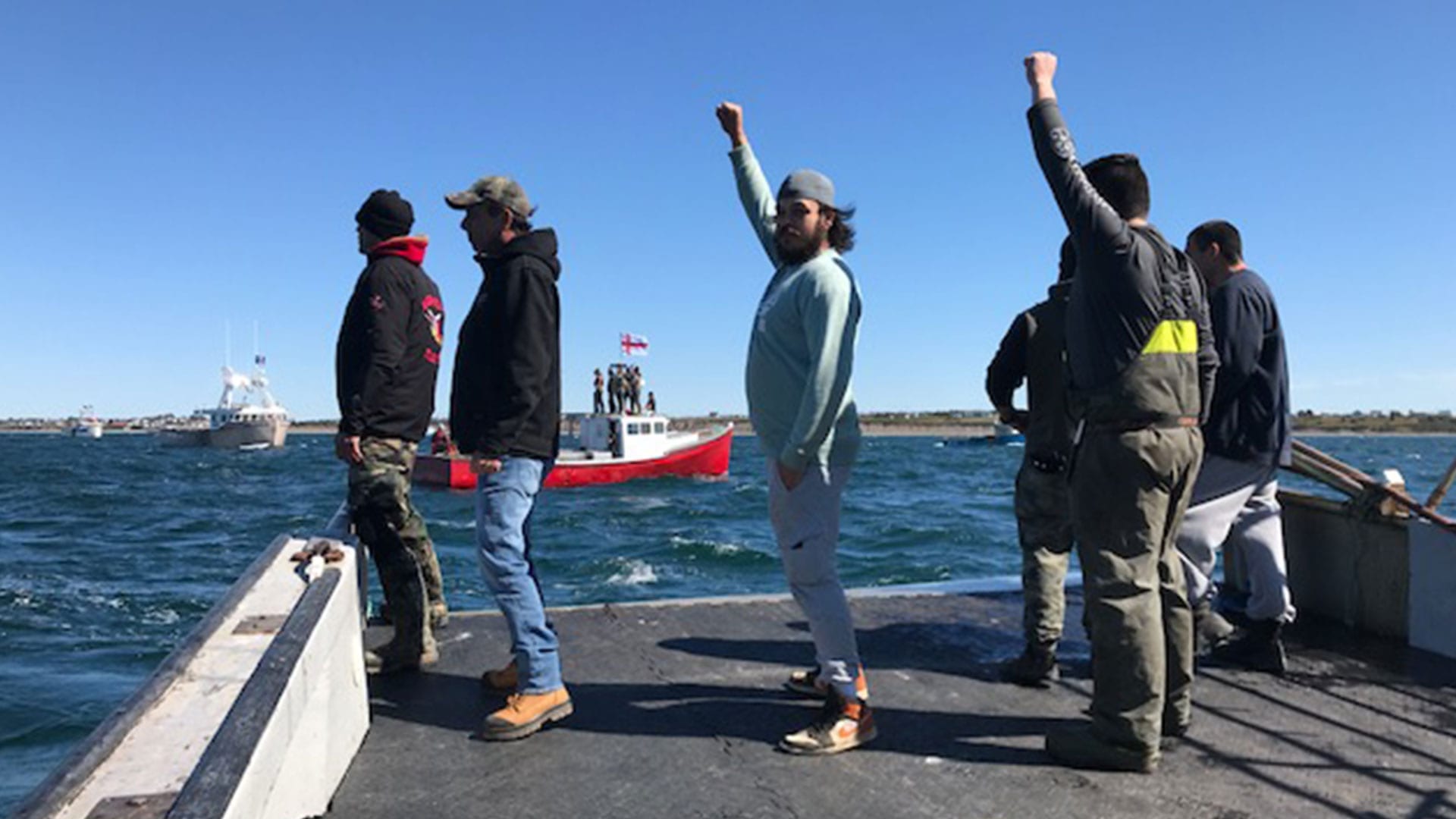
Dramatic cell phone video from that night showed a floating blockade of industry vessels had encircled the Mi’kmaq. Flares directed at the treaty harvesters darted across the screen as ships raced around in the darkness.
DFO began circulating situation reports, or SITREPs, twice daily. Despite having ample forewarning, the department was scrambling.
These SITREPs are telling.
The Sept. 18 report from C&P’s National Fisheries Intelligence Service was more concerned with other First Nations supporting the Mi’kmaq than the attacks targeting them.
“Some Chiefs and Band Councils from the Gulf region showed support to the unauthorized Lobster fishing activities in SWNS using social media platforms,” said the report.
In bullet points under the headline “officer safety,” the intelligence unit relayed “uncorroborated information” that Indigenous people from different communities might be participating or travelling to the region to support the treaty fishery.
“Information received suggests the First Nations feel that the government is not supporting the Mi’kmaq to attain a moderate livelihood through negotiations,” it said.
The report does not mention industry’s protests targeting Mi’kmaq or the DFO.
DFO continued to off load responsibility for gear destroying, threats, bullying, attacks and harassment onto the RCMP.
“C&P Enforcement Operations will continue to liaise with local police of jurisdiction for enforcement action and officer safety,” said the report.
A different SITREP revealed how the dire the situation was.
At 5 p.m., there were 200 commercial vessels in St. Mary’s Bay with more arriving. A local ship yard volunteered its facilities free of charge for those who wanted to protest.
Industry protesters continued barricading DFO detachments with traps, tires, pallets and debris. DFO incident command was relocated along with impacted staff.
Meanwhile, the RCMP were totally unprepared even though they had been warned.
They had one ship, “a ridged hull inflatable vessel,” on the water in St. Mary’s Bay. They planned on bringing in more officers over the coming days.
Coast Guard ships were mostly still in transit.
The Corporal Teather was heading to the New Brunswick side of the Bay of Fundy. The Geliget was in Meteghan helping C&P. Three more ships were sailing to the region.
Sept. 19: Coast Guard arrives, things quiet down
The marine security establishment was, at last, firing on all cylinders.
A SITREP was issued in the morning and again in the afternoon.
A Coast Guard incident management decision brief was shared. A C&P officer safety bulletin circulated and so did a Coast Guard immediate notification of event.
The morning SITREP indicated the RCMP had set up their command post in Meteghan. Industry protesters were pressing DFO with a whirlwind of demands.
The Mounties upped their watercraft to four. There were 200 commercial vessels reportedly in St. Mary’s Bay.
The report noted again “concerns from Industry that Indigenous demonstrators from Quebec are coming to SWNS.”
Nowhere does the report mention the continuing violence against the Mi’kmaq. DFO continued to downplay this element of the standoff.
The C&P officer safety bulletin similarly only mentioned “escalated tensions between the two groups.” It echoed industry fears over potential Indigenous support pouring in from elsewhere.
“Uncorroborated information from multiple social media posts have indicated intent of members from Indigenous communities from the Atlantic region and Quebec to travel to SWNS to support Indigenous fishers,” said the bulletin.
It said officers should “exercise caution when the conducting surveillance on the wharves and interacting with fishers and members of the public.”
At about the same time, the Coast Guard circulated a decision brief titled “St. Mary’s Lobster Harvest Protest.”
C&P’s desired outcomes were listed as “protection of licensed access to fisheries in the St. Mary’s Bay” and “to monitor and act upon unauthorized fishing activity.”
They never lost sight of their objective: to enforce the Fisheries Act against the Mi’kmaq. At no point, according to these records, did DFO consider protecting the Mi’kmaq.
Coast Guard aimed to “contribute to the peaceful resolution of the incident” in support of C&P.
But the brief also included a grim risk assessment.
The threat of larger or more protests?
“Likely.”
The threat of those protests turning violent?
Also “likely.”
The Coast Guard predicted the impacts of this would be “medium.” It’s unclear if they acted on these predictions.
The mitigation measures section beside the threat assessment is largely blank. The only mitigation measure written was redacted by the government.
Sept. 20: Top C&P official defends move to stand down officers
The Sept. 20 morning SITREP began by noting both industry and the Mi’kmaq felt DFO “are not doing enough to resolve the current fisheries dispute.”
Industry protesters continued to harry DFO with the lobster trap barricades. And again, this was not so concerning to DFO as the potential for increased First Nations support for treaty fishing.
The afternoon SITREP focused heavily on concerns from frustrated industry fishers. Mi’kmaw harvesters were setting traps and hauling in the prized catch. Commercial fishers had backed off slightly allowing DFO to move in instead.
Soon after, industry leaders and Jordan had a meeting. Todd Somerville, a C&P director, then sent a stern email to his subordinates.
Apparently on the call, industry leaders said “fishery officers are telling us that they want to get out there and do their job, but the Minister is telling them not to.”
He immediately tried to stamp out any rumours of political interference.
“Comments of this nature, if true, are insubordinate and reflect a disloyalty to your position as a public servant upon receipt of lawful, ethical direction,” he said.
“I, with the strong support of your Area Chiefs and the Chief of Enforcement Operation, have made the decision not to focus upon gear removal operations under the volatility of the current circumstances.”
Somerville explained that, in his assessment, the risk posed to officer safety was too great and the enforcement outcome was too little. He would be accountable for the decision.
He added that industry leaders’ comments may have been part of the misinformation already circulating. But in any case, he told his officers to keep quiet.
“A misplaced utterance in a driveway or coffee shop can be leveraged against our department and undermine years of excellent work to address this situation,” he wrote.

Sept. 22 is the last day for which internal records were released to APTN.
DFO intel gatherers believed industry protesters were switching their strategy to target treaty lobster buyers.
They had gathered on a golf course to plan.
Staff were also revaluating the Coast Guard’s risk assessment. They downgraded the likelihood of larger or more protests from “likely” to “moderate.”
They were wrong.
An angry mob of industry harvesters would torch a vehicle, burn down a lobster storage facility and steal a Mi’kmaw catch in two different attacks less than a month later.
A peaceful resolution was not what happened.








